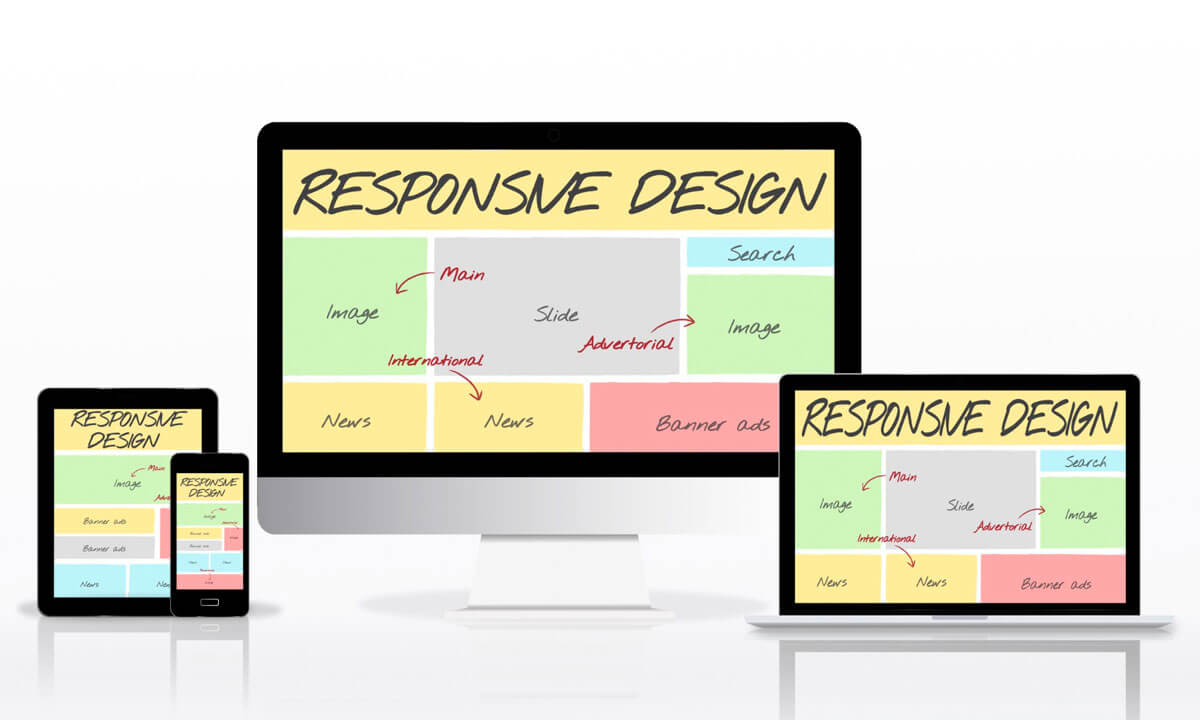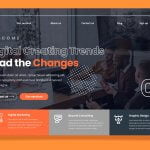
Introduction
In today’s digital age, where smartphones and tablets have become integral to our daily lives, the way users interact with websites has fundamentally changed. Gone are the days when web designers only had to worry about how a site looked on a desktop. Now, with the majority of internet traffic coming from mobile devices, it’s crucial that websites adapt to this shift. This is where responsive design comes into play.
Understanding Responsive Design
So, what exactly is responsive design? In simple terms, responsive design is a web development approach that ensures a website’s layout adjusts seamlessly to different screen sizes and devices. Whether a user is viewing your site on a smartphone, tablet, or desktop, the experience remains consistent and intuitive.
Unlike adaptive design, which creates different layouts for different devices, responsive design uses flexible grids, fluid images, and media queries to create a single layout that automatically adjusts to the user’s screen size. This approach not only simplifies the development process but also enhances the user experience across all devices.
Importance of Responsive Design
Improved User Experience
At the heart of responsive design is the user experience. A website that is easy to navigate and visually appealing on any device is more likely to engage users. Responsive design ensures that users don’t have to pinch, zoom, or scroll excessively to view content. This accessibility leads to higher user satisfaction and, ultimately, more time spent on your site.
Moreover, responsive design caters to all users, including those with disabilities. Features like scalable text and adjustable layouts make content more accessible, further improving the user experience.
Mobile-First Indexing
In 2018, Google officially rolled out mobile-first indexing, which means that the mobile version of your website is now the primary version considered by search engines when determining rankings. If your site isn’t mobile-friendly, it’s likely to suffer in search rankings. Responsive design is a key factor in improving your site’s SEO, as it ensures that your website is optimized for mobile devices, which in turn can lead to better visibility in search engine results.
Increased Conversion Rates
A responsive website not only attracts more visitors but also converts them into customers more effectively. When users can easily navigate your site and find what they’re looking for without frustration, they’re more likely to make a purchase, sign up for a newsletter, or take any other desired action. Numerous studies have shown a direct correlation between responsive design and increased conversion rates. Companies that have adopted responsive design have reported significant improvements in their sales and customer engagement metrics.
Key Elements of Responsive Design
Flexible Grids and Layouts
The backbone of responsive design is the use of flexible grids and layouts. Instead of using fixed-width layouts that only look good on certain screen sizes, responsive design relies on a grid system that scales dynamically. This flexibility allows your website to maintain its structure and visual appeal, regardless of the device it’s viewed on.
Fluid Images and Media
Images and media are an integral part of any website, but they can also be one of the biggest challenges when it comes to responsive design. Fluid images scale with the size of the screen, ensuring they don’t overflow or distort the layout. This is crucial for maintaining the aesthetics and functionality of your site across different devices.
Media Queries
Media queries are the magic behind responsive design. These CSS techniques allow your website to detect the screen size and apply specific styles that optimize the layout for that particular device. By using media queries, you can create a site that looks great on everything from large desktop monitors to small mobile screens.
Responsive Typography
Typography plays a significant role in the overall design and readability of your website. In responsive design, it’s important that text scales appropriately with the screen size. Responsive typography ensures that your content remains legible and visually appealing, whether viewed on a small smartphone or a large desktop screen.
Challenges in Implementing Responsive Design
Performance Issues
One of the challenges of responsive design is ensuring that your site performs well on all devices. Larger images, complex layouts, and extensive media can slow down load times, particularly on mobile devices with limited bandwidth. To address this, it’s important to optimize images, use efficient coding practices, and implement performance monitoring tools.
Cross-Browser Compatibility
Another challenge is ensuring that your responsive design works consistently across different browsers. While most modern browsers support responsive design features, older versions may not. It’s important to test your site on a variety of browsers and devices to ensure a seamless experience for all users.
Complex Navigation
Designing navigation menus that work well on both large and small screens can be tricky. Drop-down menus, for example, might work fine on desktops but become cumbersome on mobile devices. To address this, consider using simple, intuitive navigation structures that are easy to use on any device.
Testing and Optimization
Tools for Testing Responsive Design
Testing is a critical part of implementing responsive design. There are several tools available that allow you to see how your website looks and functions on different devices. Tools like Google’s Mobile-Friendly Test, BrowserStack, and Responsinator can help you identify and fix issues before they impact your users.
Continuous Optimization
Responsive design is not a one-time task; it requires ongoing optimization to keep up with new devices and technologies. Regularly updating your site’s design and functionality ensures that it remains responsive and user-friendly, regardless of future changes in technology.
The Future of Responsive Design
Trends in Responsive Design
As technology continues to evolve, so too does responsive design. Trends such as mobile-first design, which prioritizes the mobile experience over the desktop, and the use of progressive web apps (PWAs), which combine the best of web and mobile apps, are shaping the future of responsive design.
The Role of AI and Machine Learning
Artificial intelligence (AI) and machine learning are also expected to play a significant role in the future of responsive design. These technologies can help create more personalized and adaptive web experiences, further enhancing the benefits of responsive design.
Conclusion
In a world where the majority of web traffic comes from mobile devices, responsive design is no longer optional—it’s essential. By ensuring that your website looks and functions well on all devices, you can improve user experience, boost SEO, and increase conversion rates. Whether you’re building a new website or updating an existing one, responsive design should be at the forefront of your strategy.
FAQs
What is the difference between responsive and adaptive design?
Responsive design uses flexible grids and layouts to create a single layout that adjusts to different screen sizes, while adaptive design creates multiple layouts for different devices.
How does responsive design affect SEO?
Responsive design improves SEO by ensuring that your site is mobile-friendly, which is a key factor in Google’s mobile-first indexing.
Can I make an existing website responsive?
Yes, you can update an existing website to be responsive by implementing flexible grids, fluid images, and media queries.
What are the common mistakes to avoid in responsive design?
Common mistakes include neglecting to test on all devices, using fixed-width layouts, and ignoring performance issues.
How often should I update my responsive design?
Responsive design should be continuously




